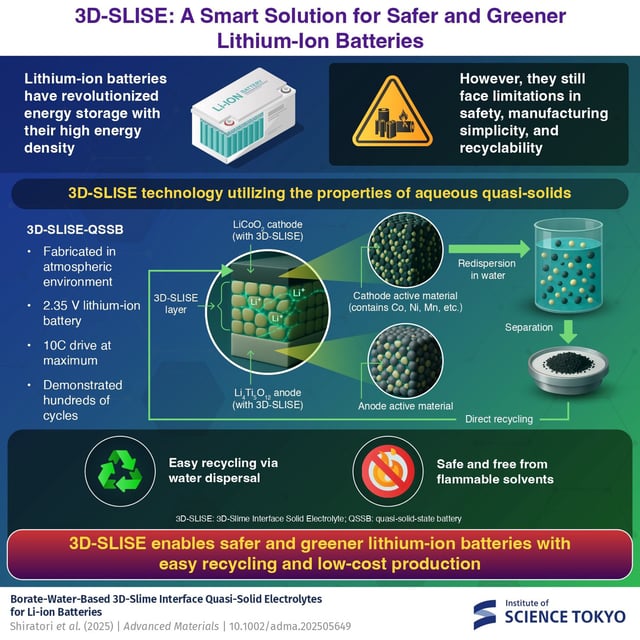Overview
- The borate–water quasi-solid matrix combines amorphous lithium tetraborate, LiFSI salt and carboxymethyl cellulose to create a slime-like interface supporting three-dimensional ion conduction.
- Lab cells using 3D-SLISE achieved 2.35 V, ionic conductivity of 2.5 mS/cm, activation energy of 0.25 eV and sustained over 400 cycles at 3C with 20-minute charge/discharge times under room conditions.
- The electrolyte’s water-based composition eliminates flammable solvents and PVDF binders, enabling direct recovery of active materials like cobalt through simple water soaking.
- Type E and Type S slurries dry naturally at room temperature, removing the need for dry rooms or high-temperature processing and suggesting industrial scalability.
- While promising for consumer electronics, stationary storage and electric vehicles, 3D-SLISE remains at the laboratory demonstration stage pending scale-up and field validation.
